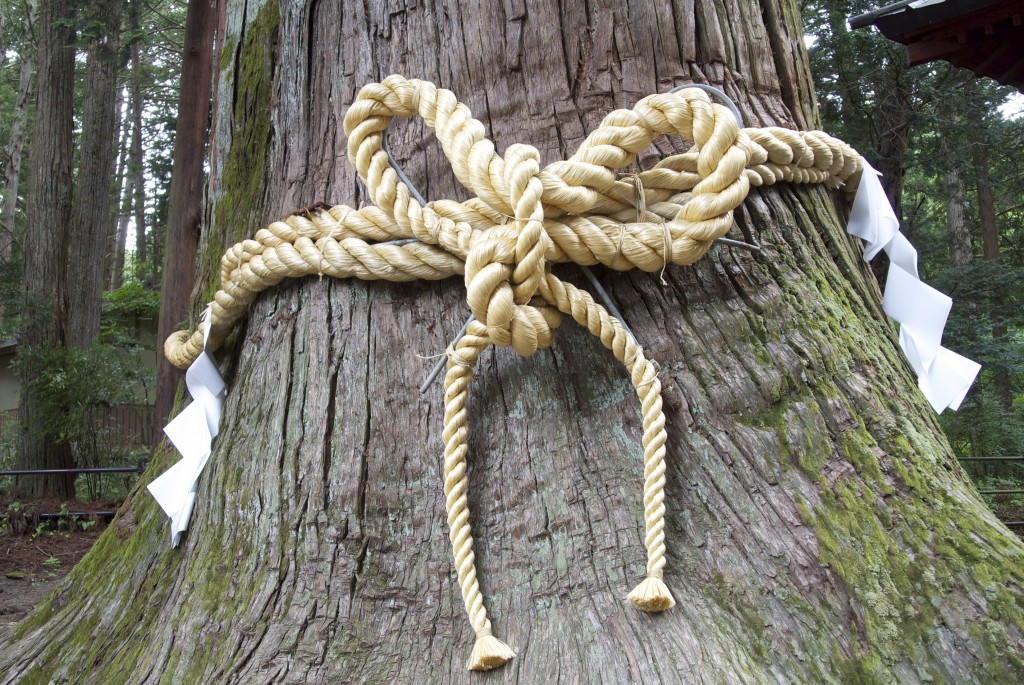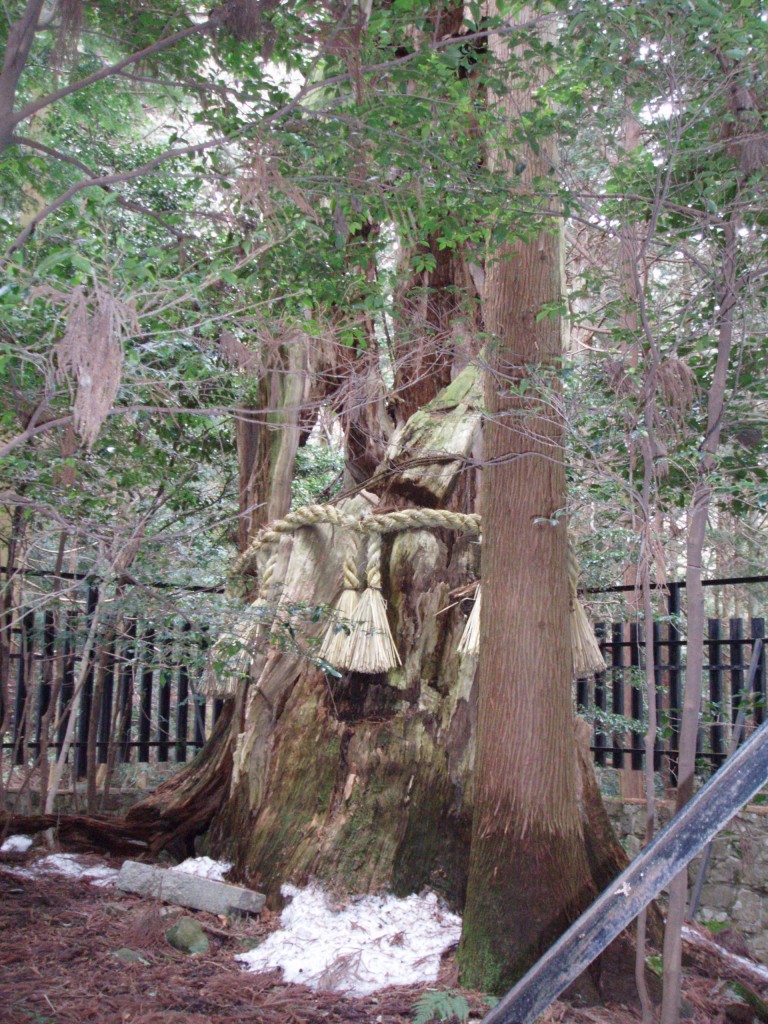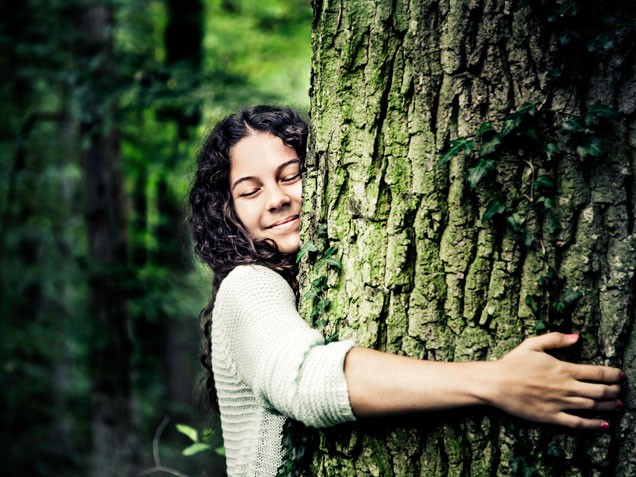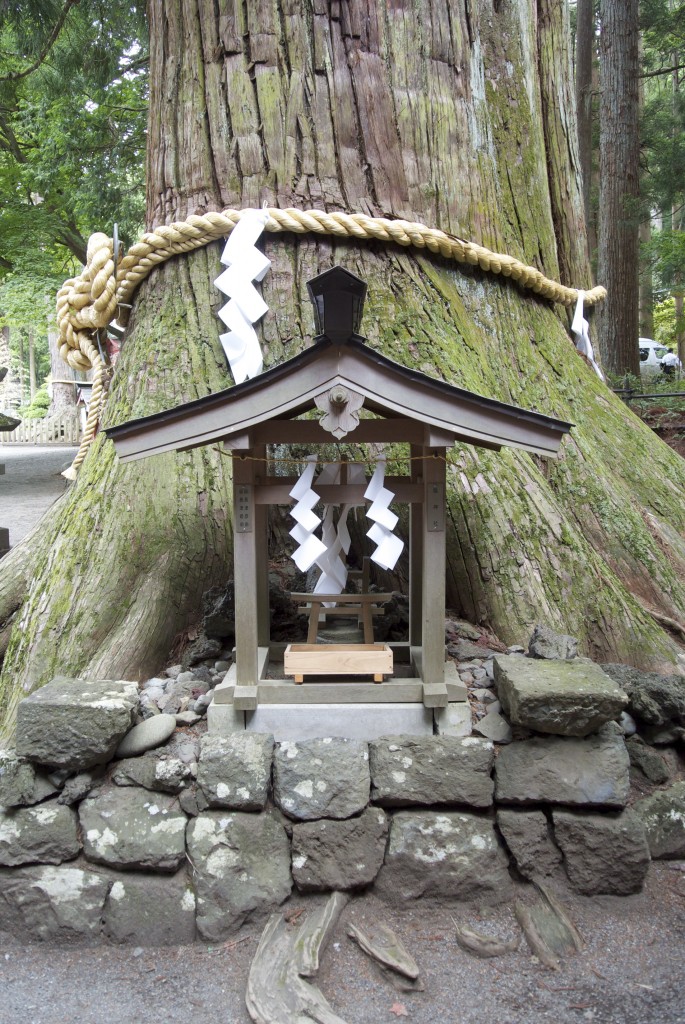
Tied to nature: Shinto honours the spirit inherent in exceptional trees
There was an excellent Ted talks event in Kyoto today, which I was fortunate to attend. For those who don’t know, Ted stands for technology, entertainment and design, and presentations are limited to 18 minutes or less. There are currently 1500 presentations available on the internet (see here).

Sacred tree at the top of Kurama hill, symbol of the life-force for the way it has overcome adversity despite having a blasted, hollow trunk
The Kyoto event was excellent, both in terms of venue, organisation and presentations. The last of the talks was probably the most inspiring, and I guess that is why the organisers saved it till the end.
In his eighteen-minute spot John Gathright talked of how he has been using tree-climbing as therapy for disabled and emotionally disturbed children. It all started off when he helped a paraplegic climb 78 meters up the fifth largest tree in the world (a sequoia in California). It was such an overwhelming experience for her that she and her assistants had to spend the night in the tree. It was, quite literally, the high point of her life.
The results Gathright has achieved with his system of ropes and harnesses is remarkable. Child abuse victims who had withdrawn within themselves opened up and smiled as they sat on high branches. Wheelchair dependent children rediscovered the joy of life. One even proclaimed, ‘I’m not a cripple, I’m a hero.’
The idea of using tree-climbing as therapy stemmed from the speaker’s reverence for trees, which consists of ‘awe and gratitude’ – two feelings at the core of Shinto. ‘Trees are our friends, teachers and doctors,’ he said. Like Wordsworth he sees lessons to be learnt from nature, but unlike the poet he has acted to extend the benefits of their restorative power to those less fortunate. His Treehab organisation runs therapy outings, in which children are refreshed by the spirit of the trees they ascend.
Gathright spoke repeatedly of the generosity of trees and of how much they give to their visitors. He spoke too of how they never give up, not even when struck by lightning or disease, but continue to struggle upwards towards the light. Funnily enough, it was the exact same message as I’d seen written up on a noticeboard at Kifune Shrine this week.
In an interesting study of people’s reactions to tree-climbing, including stress and sense of well-being, it was found that people who loved the trees they climbed got the most physical and psychological benefit. The experience provides a new way to relate to nature, and to the world at large. ‘It changes people,’ said the speaker emphatically.
Climbing trees, it turns out, really does give a different perspective on life.
************************************************************************
For more about John Gathright and the Tree Climbing Project, see http://www.treeclimbing.jp
************************************************************************
A recent Japanese study explored the benefits of visiting wooded areas — a practice known as shinrun-yoku in Japan. Of 541 volunteers, those who regularly spent time in forested areas experienced the biggest reductions in hostility and depression. And it didn’t matter how lush the forests were, nor how long the study participants spent there; just visiting the tree-rich areas had a noticeable effect.

Hugging trees is good for you (courtesy iVillage)

Revering trees can be good for the soul

Leave a Reply